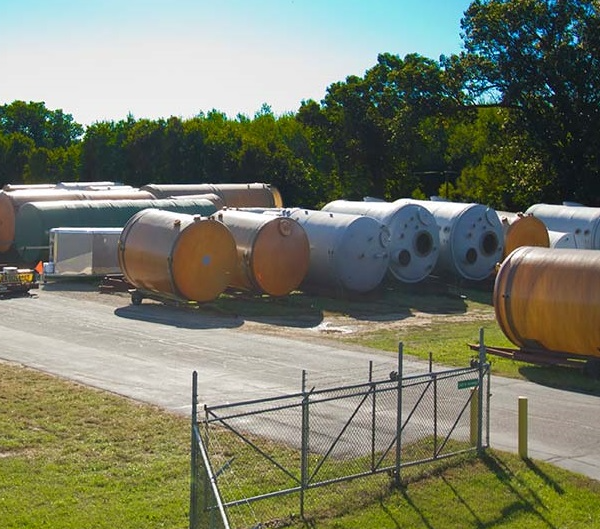
The Importance of Air Gapped Backup in Data Security
In the ever-expanding digital universe where data is king, the security of our most valuable asset is paramount. As we witness an increase in cyber threats and attacks, the discussion around data security is no longer optional but a necessity. Among the various strategies and technologies, one that stands out for its robustness is air gapped backup. StoneFly, renowned for its leading solutions in storage, cloud, and backup technologies, has honed the art of securing data with Air Gapped backup solutions that are not just reliable but also innovative.
Understanding Air Gapped Backup
Before we dig deep into the vital role of air gapped backup in data security, it’s crucial to understand what this term means. In simple terms, an air gapped backup is a method of securing data by keeping it in a completely isolated, offline environment with no internet connectivity. It involves creating a backup of critical data and then moving it to an offline storage device to prevent it from being accessed by unauthorized entities. This means even in the event of malware or data breaches, the backup remains safe from digital threats.
In today’s blog, we’ll explore why this approach is necessary for modern data protection, how to implement it effectively, real-world case studies highlighting its success, the challenges it poses, and glimpses of where this technology is headed in the future.
Why Air Gapped Backup?
In a world teeming with sophisticated cyber-attacks, the emphasis on air gapped backup has never been more critical. Unlike online and connected backups, air gapped backup ensures a physical disconnect between the copies of data and the operational systems, thus creating an impassable digital barrier for cybercriminals.
Benefits of Air Gapped Backup
- Immunity to Malware: The leading benefit of air gapped backup is its capability to protect data from malware attacks, as the isolated storages are immune to remote hacking and direct cyber threats.
- Data Integrity: With no exposure to online environments, the risk of data corruption is significantly reduced, ensuring the integrity of backups.
- Compliance and Governance: Air gapped backup is often obligatory in regulatory environments, given its robust security standards and fail-safes.
- Long-Term Data Preservation: The air gapped strategy is particularly advantageous for long-term data archiving, providing a failsafe for historical records and vital information that may not be frequently accessed.
Implementing Air Gapped Backup
The transition to an air gapped backup system can be complex, but with the right approach and tools, it becomes a seamless addition to your data security architecture.
Best Practices for Setting Up Air Gapped Backups
- Identify Critical Data: Not all data may require air gapped backup, so it is essential to identify what is most critical for your operations and security posture.
- Establish a Schedule: Regularly update and rotate air gapped backups to keep them current and useful in disaster recovery scenarios.
- Secure the Physical Environment: Ensure that the physical locations where air gapped backups are stored are secure and only authorized personnel have access to them.
Tools and Technologies for Air Gapped Backup
StoneFly offers a range of tools and technologies that make the process of air gapped backups secure and integrated into your existing IT infrastructure.
- SCVM: StoneFly’s Storage Concentrator Virtual Machine is a powerful tool for managing backups, including air gapped scenarios.
- DR365V: A Veeam Ready Backup & DR Appliance capable of air gapped backups, ensuring seamless integration with your Veeam-powered environments.
- MSP Editions: Service providers can leverage StoneFly’s MSP solutions for clients requiring air gapped backup setups.
Case Studies
To unravel the true impact of air gapped backup, it’s pertinent to examine real-world scenarios where this technology has played a decisive role in Data recovery and business continuity.
Air Gapped Success Stories
Several organizations have found respite in air gapped backups. An international law firm thwarted a ransomware attack by restoring critical data from their air gapped archives, returning to operational status without paying the ransom. Similarly, a financial institution safeguarded customer information and avoided regulatory fines with air gapped backups when their primary data was compromised by a phishing scam.
Challenges and Considerations
While the benefits of air gapped backup are indisputable, there are challenges and considerations to be aware of before an implementation.
Potential Drawbacks
- Operational Overhead: Managing air gapped backups requires regular updates and a revised IT operation approach, often leading to increased operational overhead.
- Accessibility: Due to their offline nature, air gapped backups may not be as immediately accessible as online backups, necessitating a robust backup policy to handle recovery procedures.
Factors to Consider
- Cost: Air gapped solutions often require additional hardware and resources, thus increasing the cost associated with backup and disaster recovery operations.
- Data Synching: Establishing a robust system for synchronizing data between primary and air gapped backups is critical for maintaining continuity.
Future Trends
The world of air gapped backups is not stagnant; it is evolving. New technologies are emerging, and the approach to data security is becoming more sophisticated.
Emerging Technologies Impacting Air Gapped Backups
Cutting-edge solutions like blockchain-secured storage for offline backups are taking center stage, promising higher levels of security and tamper-evident systems.
Predictions for the Future of Data Security
Industry experts are unanimous in their predictions that air gapped backup, combined with intelligent storage systems, will be the backbone of secure data management in the future.
Conclusion
Air gapped backups are more than just a checkbox on a security compliance list; they are a fundamental part of a robust and proactive data protection strategy. As we forge ahead in a digital era fraught with risks, StoneFly’s innovative technologies stand ready to champion the cause of your data security.
Frequently Asked Questions
What is the difference between air gapped and cold storage backups?
While both air gapped and cold storage backups cater to data archiving and immutability, the former specifically refers to offline backup systems that are physically isolated from the primary network and external connections.
How often should I update my air gapped backups?
The frequency of updating air gapped backups depends on your data’s criticality and the rate of change it undergoes. A good practice is to update them as frequently as your operational and security needs dictate, ideally in a scheduled and automated manner to minimize human error.
What are some best practices for securing the physical environment of air gapped backups?
Ensure the physical locations are climate controlled, away from fire hazards, and are geographically diverse to protect against local disasters. Implement strict access controls, including biometric authentication, and regularly test the security measures and the recoverability of the backups.
What role does AI play in air gapped backups?
Artificial intelligence can enhance the monitoring and management of air gapped backups by automating data integrity checks, anomaly detection, and even decision-making in recovery scenarios. StoneFly’s AI storage solutions are at the forefront of this convergence between AI and air gapped backup strategies.
Are there any specific regulations or compliance standards that mandate air gapped backups?
Several compliance standards, especially in finance, healthcare, and government sectors, explicitly require or highly recommend the use of air gapped backups. Notable examples include the Health Insurance Portability and Accountability Act (HIPAA) and the Payment Card Industry Data Security Standards (PCI DSS).










